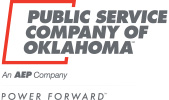Building the home of your dreams from the bottom up is a big deal! It’s also a huge opportunity to make your home more energy efficient from the start.
Instead of spending lots of time and money down the road on energy-efficient upgrades and remodels, you can get it right the first time!
Plus, making energy-efficient choices during construction can also help create energy savings, increase your resale value, and make your home more comfortable all year long.
But we get it; building a new home can be overwhelming. You might be nervous about adding another thing (energy efficiency) to your “to-do” list.
Don’t worry — we’re here to help, with up to $5,000 in rebates to homebuilders who construct a new home using the guidelines in the PSO New Homes Construction rebate program!
Before you break ground, talk to your builder about the six following opportunities!
1.) 95% LED Lighting
ENERGY STAR® certified LED and CFL light bulbs last up to 25 times longer than incandescent bulbs—and they use up to 90% less energy. That translates to big savings.
2.) Insulation
Properly installed insulation means more comfort and less energy. It’s a vital component of any energy-efficient home—bad or improperly installed insulation could make your HVAC work overtime, costing you more money on your utility bills. Walls should be insulated to an R-value (the measurement of insulation’s resistance to heat) of 15 or higher, while attics should be to an R-value of 38 or higher. Foam encapsulation is also acceptable at an R-value of 13 for walls and 21 for the attic.
3.) High-efficiency HVAC or Heat Pump
Heating and cooling account for half of your energy usage, but with the right unit, you can stay comfortable without breaking the bank. Look for A/C units with a SEER rating (Seasonal Energy Efficiency Ratio) of 15.2 SEER2 or higher. Look for furnaces with a high AFUE rating (Annual Fuel Utilization Efficiency). Want to be even more efficient? Check out the benefits of a heat pump that both heats and cools your home.
4.) Home Infiltration
This is “industry-speak” for how much air is leaking out of your home. Insulation plus door and window seals are two major factors for leakage, but not the only ones. Infiltration tests are measured using a blower door test that will be conducted by a HERS® Rater (Home Energy Rating System Rater) when participating in PSO’s New Home Construction rebate program.
5.) Duct Infiltration
Similar to home infiltration, duct infiltration measures the amount of air leaking from the ductwork throughout the home. A diagnostic duct blaster test is used to measure the leakage in your ductwork. This test is also performed by a HERS Rater. Talk to a participating builder to find out more about the testing performed by HERS Raters.
6.) 100% ENERGY STAR Certified Windows
Not all windows are created equal—the wrong window can suck the energy out of your home and undermine other energy-efficient measures you’ve implemented. When building a new home, you should only use ENERGY STAR certified windows with a .30-or-less U-Factor (the measurement of the rate of heat transference).
Let us help you take advantage of up to $5,000 in rebates – and build an energy-efficient new home from the bottom up!
